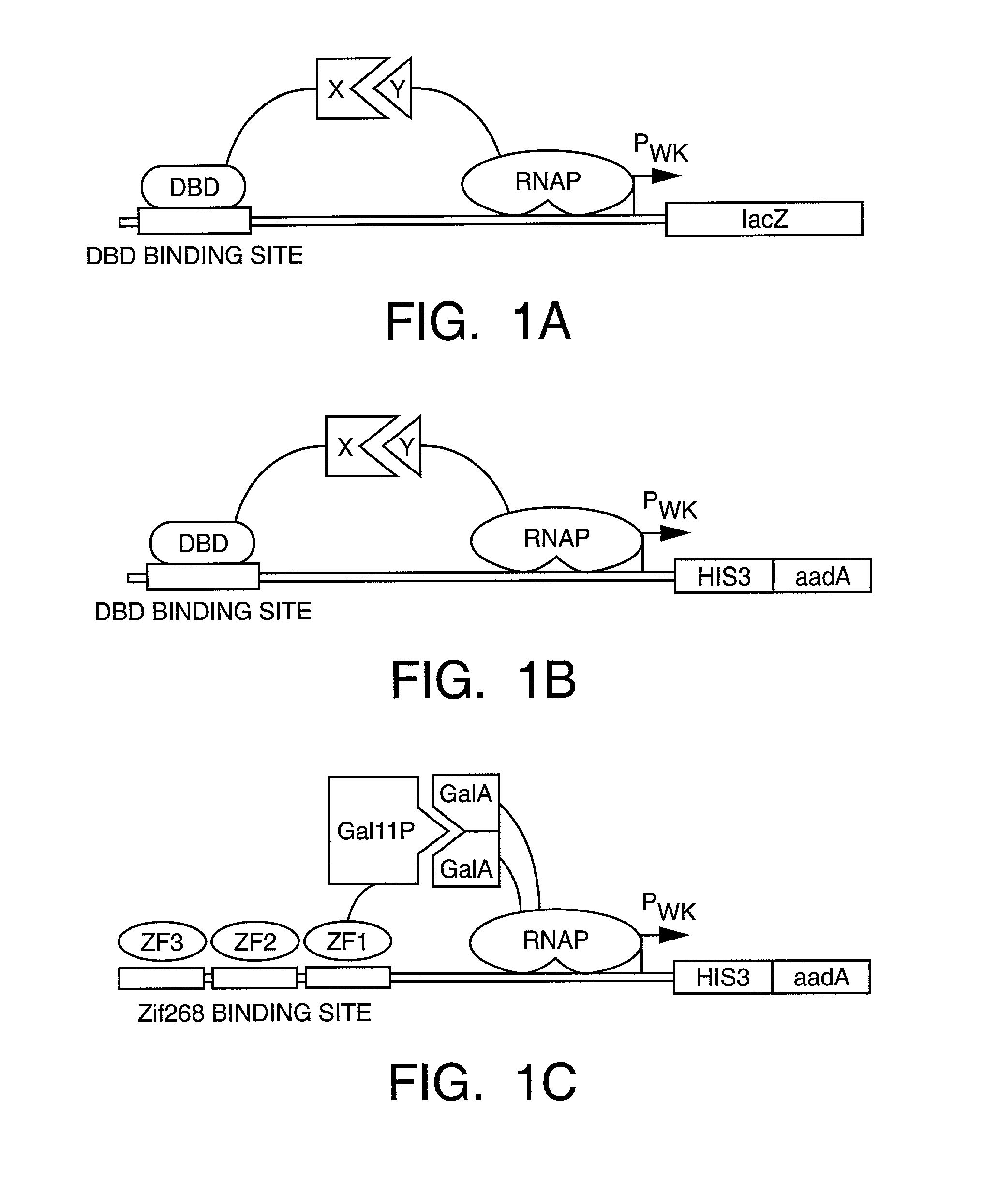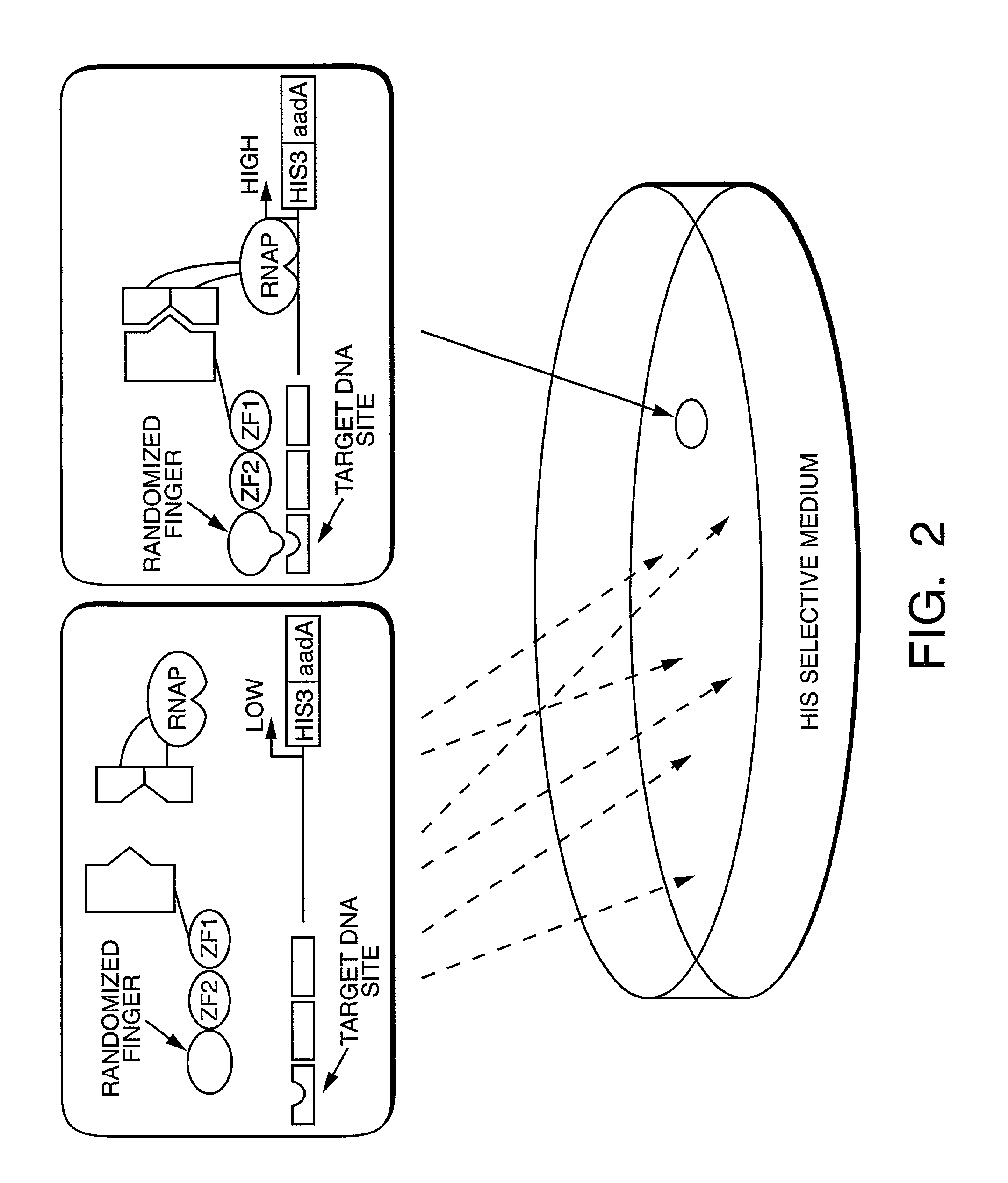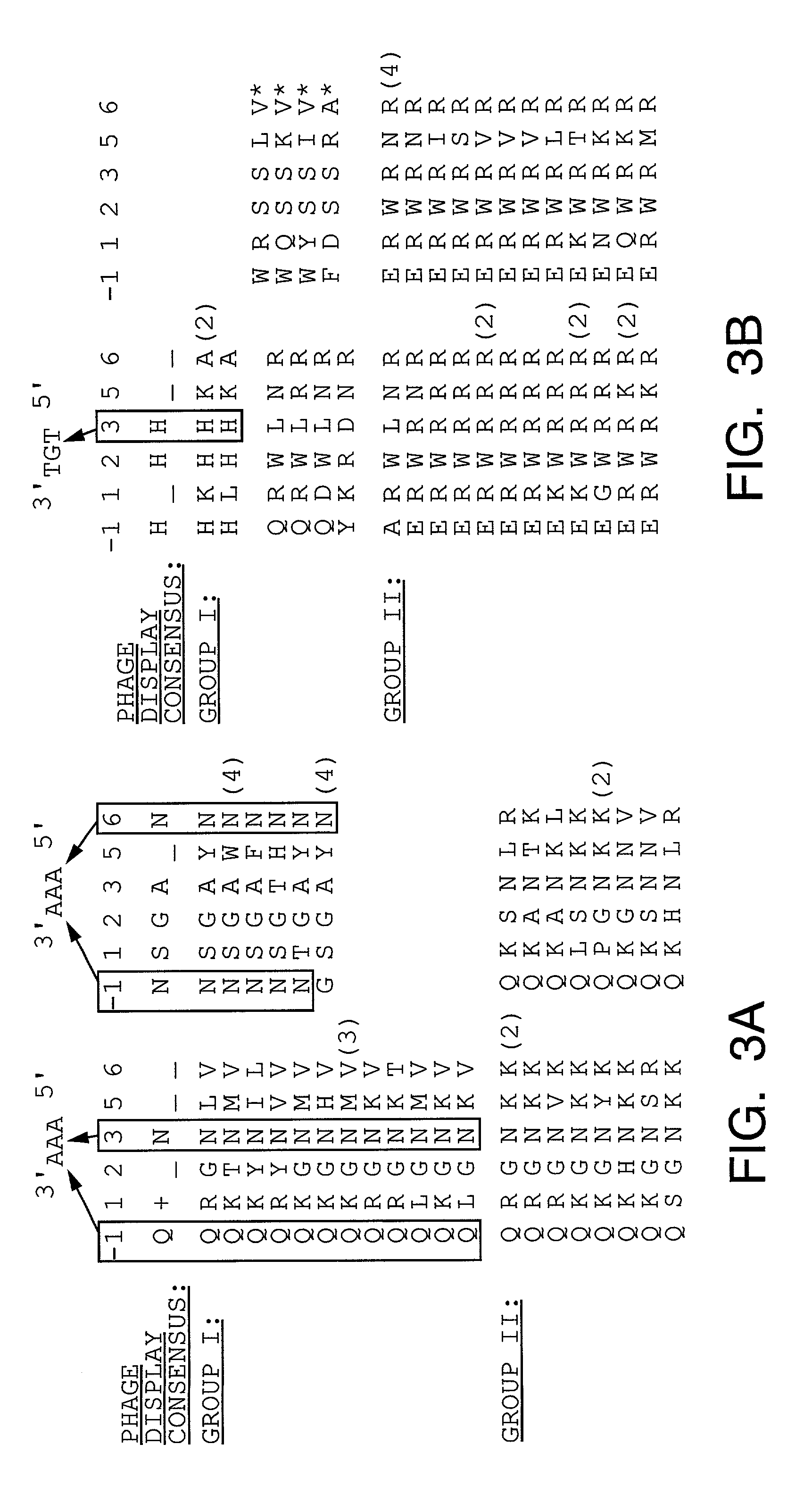Methods and compositions for interaction trap assays
a technology of interaction trap and composition, which is applied in the field of compositions for interaction trap assays, can solve the problems of not being able to detect oligomers of targets, not being able to detect associated proteins which are displaced from known proteins, and being difficult to control so as to achieve the effect of controlling the degree of growth advantag
- Summary
- Abstract
- Description
- Claims
- Application Information
AI Technical Summary
Benefits of technology
Problems solved by technology
Method used
Image
Examples
example 1
[0352]We have developed a bacterial “two-hybrid” system that readily allows selection from libraries greater than 108 in size. Our bacterial system may be used to study either protein-DNA or protein-protein interactions, and it offers a number of potentially significant advantages over existing yeast-based one-hybrid and two-hybrid methods. We tested our system by selecting zinc finger variants (from a large randomized library) that bind tightly and specifically to desired DNA target sites. Our new method allows sequence-specific zinc fingers to be isolated in a single selection step, and thus it should be more rapid than phage display strategies which typically require multiple enrichment / amplification cycles. Given the large library sizes our bacterial-based selection system can handle, this method should provide a powerful tool for identifying and optimizing protein-DNA and protein-protein interactions.
[0353]Selection and screening methods are powerful tools for studying macromol...
example 2
[0416]In order to determine if bacterial cells can be sorted by FACS according to the methods of the present invention, we first tested the behavior of several different fluorescent proteins in our system.
[0417]We originally tried the promoter constructs described in Example 1 above with EGFP as the reporter gene, but decided that a stronger signal would be more useful. We placed the reporter construct on a low copy number p15A origin / chloramphenicol resistant plasmid rather than the single copy F factor. We then cloned the alpha-gal4 fusion and its lpp-UV5 promoter onto a low copy number plasmid with the RK2 origin and tetracycline resistance.
[0418]
copiesantibioticplasmid originper cellinducerresistancereporterp15A20–30N / Achloramphenicolalpha-gal4RK2~10IPTGtetracyclineDBD-gal11PColE150–70IPTGampicilin
[0419]As FIG. 4 illustrates, discernible differences in fluorescence of the host cells can be detected between a bait protein that binds the DNA site tightly (Z121) versus a bait prote...
example 3
[0424]The ability to simultaneously and independently monitor the interaction of a single DNA-binding protein with multiple DNA binding sites within a single cell could be very useful for selecting proteins with differential activation at distinct DNA binding sites. Separate reporter constructs, each with a separate DNA binding site driving the expression of a reporter gene that encodes a fluorescent protein with unique fluorescent properties, is one way to achieve this goal. In order to create such a system using the bacterial two-hybrid ITS, we decided to use EGFP and dsRed (RFP) as the two reporter genes since they have different fluorescent emission spectra, but can both be excited by the argon ion lasers (λ=488 nm) commonly found in FACS machines. The first reporter construct has a binding site for the Zif268 protein, a minimal pLac promoter and EGFP as the reporter gene. The second reporter construct has a binding site for the T11 protein (a protein selected as part of Example...
PUM
| Property | Measurement | Unit |
|---|---|---|
| Volume | aaaaa | aaaaa |
| Volume | aaaaa | aaaaa |
Abstract
Description
Claims
Application Information
 Login to View More
Login to View More - R&D
- Intellectual Property
- Life Sciences
- Materials
- Tech Scout
- Unparalleled Data Quality
- Higher Quality Content
- 60% Fewer Hallucinations
Browse by: Latest US Patents, China's latest patents, Technical Efficacy Thesaurus, Application Domain, Technology Topic, Popular Technical Reports.
© 2025 PatSnap. All rights reserved.Legal|Privacy policy|Modern Slavery Act Transparency Statement|Sitemap|About US| Contact US: help@patsnap.com



